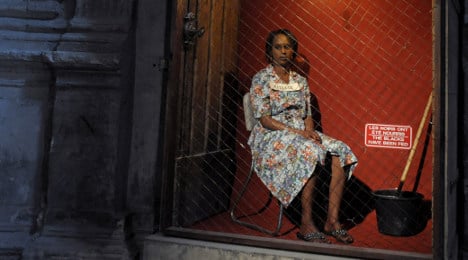The white South African artist Brett Bailey says his “Exhibit B”, which mimics the late 19th- and early 20th-century phenomenon of the "human zoo”, is meant to raise awareness of the racism of Europe’s colonial past.
It is due to open in the French capital later this month, but it is now raising heckles among race campaigners such as those behind a French petition to have it stopped and who see it as an “exhibition composed of degrading representations of black people.”
“It is already surprising that in the mixed districts of northern Paris, the multi-ethnic population is being invited to come and learn about the racism of a white South African,” said the petition that has been signed by 14,000 people.
“It is all the more shocking that the possibilities for black artists to present their work in these prestigious cultural centres are extremely limited,” it added.
The same exhibition was due to take place in London but protesters successfully put a block on it last month.
The show alludes to the phenomenon of “human zoos” which once showcased non-whites, mostly from colonized territories, for white audiences to observe in parklike settings in Europe and the United States.
The artist also says he uses “tableaux”, such as one featuring a modern-day asylum seeker bound to a plane seat with tape, to try and make people question their role as voyeurs in contemporary human tragedies.
France's black community rights group CRAN said it was not calling for the exhibition to be stopped but said that while “it might be well-intentioned it reinforces stereotypes”.
“It shows black people as passive and as victims,” CRAN president Louis-Georges Tin told The Local. “It never shows the struggle by black people for their own emancipation.”
The two state-funded centres where the show is to take place, the Centquatre and the Theatre Gérard Philippe, vowed in an open letter this week that the show would go ahead and that they would not cave in to protesters who had not even seen the exhibition.
“This work of art unambiguously denounces all forms of dehumanization and of racism,” the letter said.
The latest controversy comes after protesters last month physically attacked the “Tree” installation – which many saw as no more than a giant anal plug – by US artist Paul McCarthy in Paris’s Place Vendome.
by Rory Mulholland



 Please whitelist us to continue reading.
Please whitelist us to continue reading.
Member comments